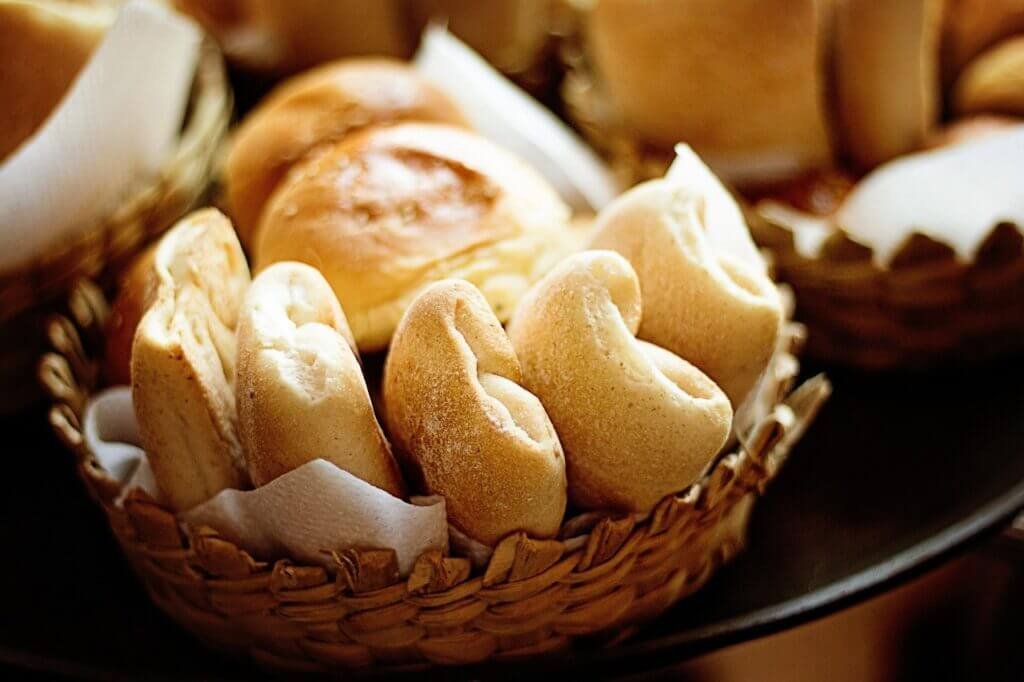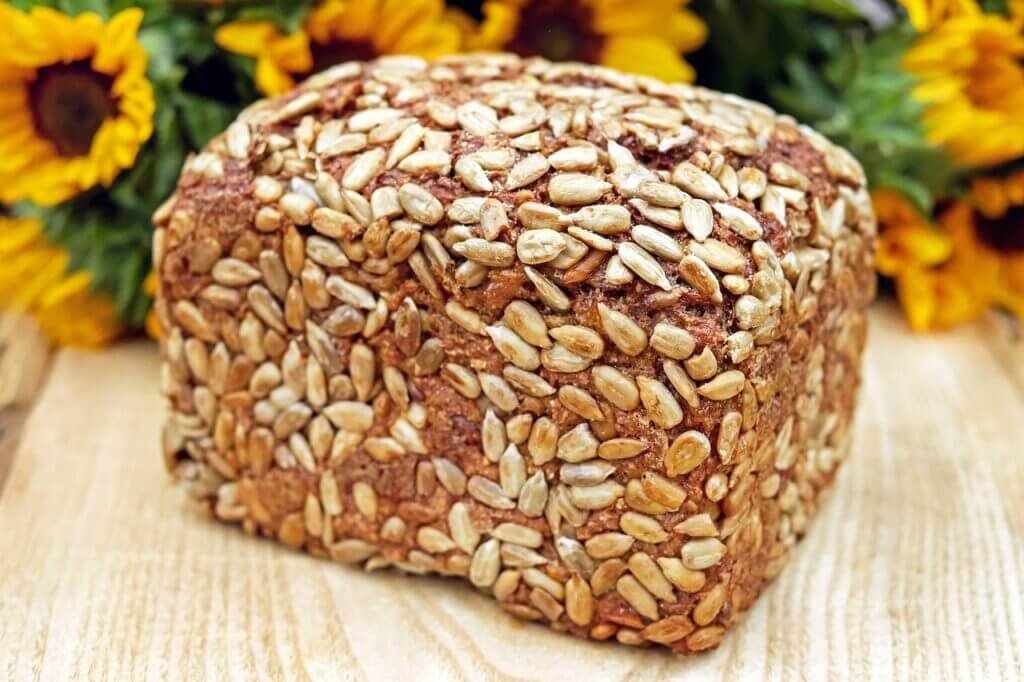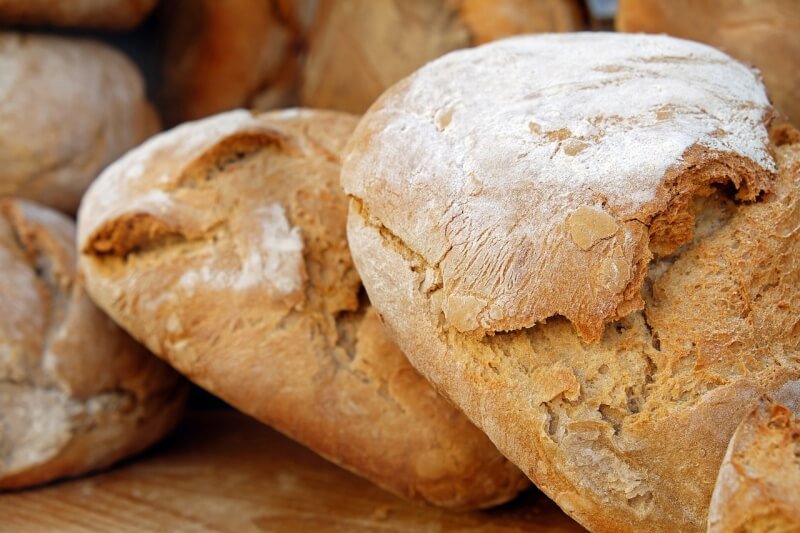You’ve always loved the aroma and taste of freshly baked bread, but you’ve never had a bread machine. Don’t worry, because making homemade bread without a bread machine is easier than you think. With a few simple tips and tricks, you can achieve that soft, fluffy loaf of bread right in your own kitchen. Whether you’re a baking newbie or a seasoned pro, these tips will help you create the perfect homemade bread without the need for any fancy equipment. So grab your apron, roll up your sleeves, and get ready to embark on a delicious bread-making adventure!

Choosing the Right Flour
When it comes to making homemade bread, choosing the right flour is essential for achieving the desired results. Different types of flour contain varying levels of protein, which affects the dough’s structure and texture. Understanding these differences will help you select the perfect flour for your bread.
Understanding different types of flour
The most commonly used flours for breadmaking are all-purpose flour, bread flour, and whole wheat flour. All-purpose flour is versatile and works well for a variety of baked goods, including bread. However, if you want a loaf with a chewier texture and a higher rise, bread flour is the way to go. It has a higher protein content, which creates more gluten, resulting in a stronger structure for the bread to rise. Whole wheat flour, on the other hand, adds a nutty flavor and a denser texture to your bread.
Using bread flour for better results
For a bread with a light and airy texture, bread flour is the ideal choice. Its high protein content, usually around 12-14%, helps the dough develop strong gluten strands, leading to a good rise. Bread flour is readily available in most grocery stores and can be used in a wide range of bread recipes. If you’re new to breadmaking, using bread flour will greatly increase your chances of success.
Experimenting with whole wheat flour
If you’re looking to add more nutritional value to your homemade bread, experimenting with whole wheat flour can be a great option. Whole wheat flour contains all parts of the wheat grain, making it higher in fiber and nutrients compared to refined flours. However, due to its denser nature, bread made entirely with whole wheat flour can be heavier and have a more pronounced flavor. A common approach is to use a combination of whole wheat and bread flour to strike a balance between nutrition and texture.
Adding Yeast and Other Leavening Agents
Yeast is an essential ingredient in breadmaking as it serves as the leavening agent that makes the dough rise. Understanding how to handle yeast properly will ensure successful fermentation and result in a flavorful loaf of bread.
Proofing the yeast
Before incorporating yeast into your recipe, it’s important to activate or “proof” it. This step ensures that the yeast is viable and ready to do its job. To proof yeast, dissolve it in warm water (around 110°F) and add a small amount of sugar. Within a few minutes, the mixture should become frothy, indicating that the yeast is alive and active. If the yeast doesn’t foam, it’s likely expired and should be replaced.
Using instant yeast for convenience
Instant yeast, also known as rapid-rise or quick-rise yeast, is a popular choice for breadmaking due to its convenience. Unlike active dry yeast, instant yeast can be added directly to the dry ingredients without proofing. It’s important to note that instant yeast may require slightly less time for rising compared to active dry yeast. Always follow the specific instructions on the yeast package or your recipe to ensure optimal results.
Trying sourdough starter instead
For those seeking a more complex and tangy flavor, using a sourdough starter is an excellent option. A sourdough starter is made by fermenting a mixture of flour and water over several days, allowing wild yeast and lactobacilli bacteria to develop. This natural leavening agent adds a unique depth of flavor to the bread and eliminates the need for commercial yeast. Sourdough baking is a skill that requires time and practice, but the results are incredibly rewarding.

Kneading the Dough Properly
The process of kneading is crucial to developing gluten in the dough, which creates the structure needed for a light and airy bread. Whether by hand or using a stand mixer, knowing when the dough is properly kneaded is essential for achieving optimal results.
Knowing when the dough is ready
When kneading by hand, it’s important to pay attention to the dough’s texture and elasticity. The dough should feel smooth and supple, pulling away from the sides of the bowl or your hands. To check if the dough is properly kneaded, perform a “windowpane test.” Take a small piece of the dough and stretch it gently. If you can stretch it thin enough to see light passing through without tearing, the gluten has been adequately developed.
Using a stand mixer for ease
Kneading by hand can be a laborious process, especially for beginners. Using a stand mixer with a dough hook attachment is a fantastic alternative that saves time and effort. Start the mixer on low speed to combine the ingredients, then gradually increase to medium speed for kneading. It’s important to periodically stop the mixer and check the dough’s texture to ensure it’s not being overworked.
Mastering the art of hand kneading
If you prefer the tactile experience of kneading by hand, there are a few key techniques to keep in mind. Begin by lightly floured surface and use the heel of your hand to push the dough forward. After each push, fold the dough over itself and rotate it one-quarter turn. Continue this process, incorporating more flour if necessary, until the dough becomes smooth and elastic. Hand kneading requires practice, but with time, you will develop a sense of the dough’s readiness.
Allowing the Dough to Rise
After kneading the dough, allowing it to rise is crucial for proper fermentation and achieving the desired texture and flavor. Proper timing and a favorable environment are key factors to consider during this stage of breadmaking.
Finding the perfect spot for rising
The ideal temperature for bread dough to rise is around 75-85°F (24-29°C). However, room temperature variations can still yield good results. To create a warm environment, you can place the dough in a slightly warmed oven, near a heat source, or cover it with a clean kitchen towel and place it in a draft-free area. Be cautious not to expose the dough to excessive heat, as it can lead to overproofing.
Covering the dough to prevent drying out
During the rising process, it’s essential to cover the dough to prevent it from drying out. A damp kitchen towel or plastic wrap lightly greased with oil will effectively keep the dough moist and prevent the formation of a dry crust. Ensure that the covering is loose enough to allow for the dough’s expansion as it rises.
Understanding the ideal rise time
The amount of time required for the dough to rise can vary depending on the recipe and environmental factors such as temperature and humidity. Generally, the dough should double in size during the first rise, which typically takes 1-2 hours. The second rise, also known as the proofing stage, is usually shorter, around 30-60 minutes. It’s important to keep a close eye on the dough and look for visual cues rather than relying solely on time.

Shaping the Dough
Shaping the dough is the step that gives your bread its final appearance. Proper shaping ensures an even rise and helps create a beautiful crust.
Choosing the desired shape
The shape of your bread is entirely up to your preference, whether it’s a traditional sandwich loaf, a round boule, or even a baguette. Different shapes require different techniques, so it’s helpful to watch video tutorials or follow detailed instructions for your desired shape. Remember to handle the dough gently, preserving the gas bubbles created during the fermentation process for a light and airy texture.
Using a bench scraper for clean cuts
To achieve clean cuts and professional-looking patterns on your bread, a bench scraper is a handy tool. Dip the bench scraper in flour or water before making your desired cuts on the dough’s surface. This step not only adds a decorative element but also helps control the rise and prevent the bread from splitting in unintended areas.
Enhancing the crust by creating steam
To achieve a crisp and golden crust, it’s vital to create steam during baking. Steam helps the dough expand before the crust sets, resulting in an airy interior and a beautiful exterior. There are a few ways to create steam in your oven, such as placing a pan of hot water on the lower rack or spritzing water onto the sides of the oven. Alternatively, baking your bread in a Dutch oven or covered pot during the first part of baking will trap moisture and create steam.
Baking Techniques
Proper baking techniques are essential for achieving the perfect bread with a fully cooked interior and a crusty exterior. Paying attention to preheating the oven, using the right equipment, and utilizing water baths can greatly enhance your baking results.
Preheating the oven for optimal results
Preheating the oven is a crucial step to ensure even heat distribution and proper oven spring, which is the final rise of the dough in the hot oven. Most bread recipes will specify the recommended oven temperature and preheating time. Allow the oven to preheat sufficiently before placing the dough inside to ensure consistent baking.
Baking on a preheated stone or baking sheet
For a crisp and evenly baked crust, baking your bread on a preheated baking stone or baking sheet is highly recommended. These materials help transfer heat to the dough’s bottom, resulting in a well-baked loaf. Place the stone or sheet in the oven while preheating, then gently transfer the shaped dough onto it for baking. Just be cautious when handling the hot materials to avoid burns.
Using a water bath for a crusty loaf
Creating steam during baking is crucial, as previously mentioned. One effective method to achieve this is by using a water bath. Place a shallow pan or a baking dish filled with boiling water on the bottom rack of the oven. The steam created by the boiling water will help create a beautifully crusty loaf. Be careful when opening the oven during baking to prevent steam burns.
Testing for Doneness
Knowing how to determine if your bread is fully cooked is essential for producing a perfect loaf every time. There are a few reliable methods to test for doneness.
Tapping the bottom for a hollow sound
One classic method to check if the bread is fully baked is by tapping the bottom. Gently turn the loaf upside down and firmly tap the bottom with your knuckles. If it produces a hollow sound, it indicates that the bread is baked through. If the sound is dull or the bread feels dense, return it to the oven for a few more minutes.
Checking the internal temperature
Another reliable way to confirm doneness is by using an instant-read thermometer. Insert the thermometer into the center of the loaf, and if the temperature reads between 190-205°F (88-96°C), it’s an indication that the bread is fully baked. If the temperature is lower, continue baking for a few more minutes until the desired temperature is reached.
Looking for a golden brown crust
Visual cues are essential when assessing the readiness of your bread. A fully baked loaf should have a deep golden brown crust. Keep an eye on the color during baking and adjust the oven temperature if necessary to prevent over-browning or burning.
Cooling and Storing the Bread
After baking your bread to perfection, proper cooling and storage techniques will help retain its freshness and flavor.
Allowing the bread to cool completely
Resist the temptation to slice into your freshly baked bread immediately. Allowing the loaf to cool completely is crucial to achieve optimal texture and prevent moisture loss. Place the bread on a wire rack and let it cool for at least an hour before cutting. This allows the crumb structure to set and prevents it from becoming gummy.
Wrapping the bread properly for storage
To retain your bread’s freshness and prevent it from drying out, proper wrapping is essential. Once the bread has cooled completely, wrap it tightly in plastic wrap or place it in a resealable plastic bag. For extended storage, consider using a bread box or placing the wrapped loaf in an airtight container.
Reheating bread for a fresh taste
If your homemade bread begins to stale after a day or two, there’s no need to worry. Reheating it can help restore its fresh taste and texture. Preheat the oven to around 350°F (175°C), sprinkle a few drops of water on the bread’s surface, and wrap it loosely in aluminum foil. Place it in the oven for about 10-15 minutes until warmed through. The bread will feel and taste as delicious as when it was first baked.
Troubleshooting Common Issues
Despite your best efforts, breadmaking can sometimes present challenges. Understanding common issues and their solutions will help you troubleshoot and improve your bread-baking skills.
Dealing with dense or gummy bread
If your bread turns out dense or gummy, it may indicate underdeveloped gluten or underbaking. Ensure the dough is thoroughly kneaded until it reaches the appropriate gluten development. Additionally, double-check the baking time and internal temperature. Return the bread to the oven and continue baking until the desired doneness is achieved.
Solving problems with no rise
If your bread fails to rise, several factors may be at play. First, check the expiration date of your yeast and confirm that it has been stored properly. If unsure, try proofing a small batch of yeast to ensure its viability. Pay attention to the room temperature during fermentation, as cooler environments can significantly impact the yeast’s activity. Lastly, check the dough’s moisture level – overly dry dough can hinder the yeast’s growth.
Avoiding burnt or undercooked bread
Baking bread can sometimes be a delicate balance between achieving a well-baked crust and ensuring a fully cooked interior. If your bread consistently burns or is undercooked, consider adjusting the oven temperature or positioning the shelves to ensure even heat distribution. Additionally, make sure to accurately follow the baking time specified in your recipe.
Enjoying the Rewards
After mastering the art of homemade bread, it’s time to reap the rewards of your hard work and creativity.
Sharing homemade bread with loved ones
One of the greatest joys of baking bread is sharing it with others. Whether it’s a loaf for a family gathering or small individual rolls for a dinner party, homemade bread always delights and brings people together. The love and effort you put into your bread will be cherished by those who taste it.
Discovering the joy of fresh, warm slices
There’s nothing quite like the joy of biting into a warm slice of freshly baked bread straight from the oven. The aroma, texture, and taste are unparalleled. Treat yourself to the simple pleasure of enjoying your bread while it’s still warm and savoring every mouthful.
Feeling accomplished and proud of your creation
Baking homemade bread is a truly rewarding experience. The process of transforming simple ingredients into a delicious loaf is a testament to your skill and craftsmanship. Take pride in your creation and continue to explore new recipes and techniques to elevate your breadmaking skills. Remember, the journey of baking bread is as delightful as the destination itself.


